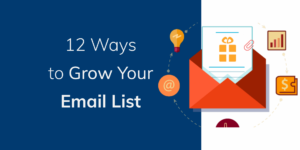Competition isn’t a bad thing in business. It keeps you on your toes, allows you to improve continually, and gives you a chance to see what works and what doesn’t with your target audience.
Social media has made it easier than ever to research your competition and take a lesson from their customer interactions. Knowing what to look for as you check out their social profiles can give you a huge advantage in the marketplace. Here are a few things to investigate on your competitors’ pages.
1. Identify Your Target Audience
You might not already know who your target customer is, especially if you’re a new business. Start by tracking down businesses that offer a similar product or service, and then hop on their social pages.
From there, you can begin studying the types of people frequenting the pages and interacting the most. Are you seeing mostly moms, young professionals, teens, millennials? Male or female? Read the comments to get an idea of who your target customer might be.
2. Study How They Engage With Customers
Now examine how your competitors interact with your target audience. Are their pages littered with complaints from customers that have gone unaddressed? Or are complaints handled promptly to customers’ satisfaction? How about positive comments? How are those handled?
Not only will you learn customers’ likes and pain points, but you’ll also identify how you can pick up where your competition is leaving off. Make it your priority to respond to customers within the hour, using a friendly tone of voice and wording that’s appropriate for your target customers. Your diligence and attentiveness to customers will earn you a reputation of being trustworthy, respectful and helpful (while your competitors flounder!).
3. Mimic What’s Working
Which competitor posts are getting the most likes, shares and comments? Which posts inspire positive reactions from customers?
On pages with heavy customer engagement, you’ll get an idea of which type of content resonates with your audience. Is it curated content, case studies, images, quotes, videos? A combination of posts? Take note of the most effective posts so you can repackage similar content and calls to action on your page.
Also, although the majority of your content should be non-promotional in nature, you’ll want to sprinkle in posts about special promotions and contests. Be aware of how often your competitors post self-promotional content and how customers respond so you can learn the best ways to present this type of content.
4. Avoid What’s Not
On the flip side, which posts get negative feedback … or no feedback at all? Here’s where you have a chance to be a fly on the wall to know how an audience reacts to certain types of content.
Side note: If the page overall doesn’t appear to get any customer engagement, it could be because customers are not seeing the page in their newsfeeds. Whatever the reason (lack of advertising, for example), that page might not be the best example for you to study. However, if the page gets interaction on some posts but not all, then you can be reasonably confident in studying how customers engage with the content.
In the case of negative responses to posts, take note of content that makes customers angry or upset. That’s not to say you should never post anything controversial, but do so cautiously. While thoughtful dialogue and debate is good, offensive is not, and you probably don’t want that kind of commentary on your page.
[bctt tweet=”Be a fly on the wall to know how an audience reacts to certain types of content.” username=”rallioHQ”]
5. Identify the Best Times to Post
In addition to the types of content, be aware of the times of day when customers seem to interact with content the most on competitors’ pages. Look at key times of day, such as early morning, lunchtime, dinnertime and late evening. Over time, you can identify patterns and post your content when your audience is most likely to see it.
6. Establish Yourself as an Expert
As a business owner, you are an expert in something. Perhaps your competitors have already demonstrated their expertise with a target audience, and you might think there’s no room for another one. That’s simply not true!
You can involve yourself in conversations that give you an opportunity to showcase your ideas, knowledge and authority on the subject. Join Facebook and LinkedIn groups that relate to your industry. Track keywords on Twitter and Instagram so you can respond to users’ comments. Go wherever your target customers are hanging out so you can become top-of-mind with them.
Avoid saying anything negative about competitors, as that just makes you look desperate. Instead, rely on your own expertise to convey information with confidence. Your customers will pick up on your tone and learn to identify you as the go-to person on a particular topic.
I’ll give you a great example. I’m a member of a Facebook group that’s just for local moms. People post all kinds of comments and questions on there, and sometimes people will post something looking for a good real-estate agent. Oftentimes, in response to these inquiries, people in the group will tag a friend of mine who has established herself as the go-to person for any questions about home buying and selling, mortgages and the like. She didn’t do it by bashing competitors; she did it by providing great customer service, helpful information and a friendly tone of voice. Simple as that!
[bctt tweet=”As a business owner, you are an expert in something.” username=”rallioHQ”]
7. Post Content That They’re Not Posting
As you’re noticing what competitors do post, note what they don’t post, too. Start brainstorming ways you can communicate with customers in fun, novel ways. Creativity goes a long way toward gaining loyal followers!
What information have you learned by studying competitors’ social pages? I’d love to hear your thoughts.


